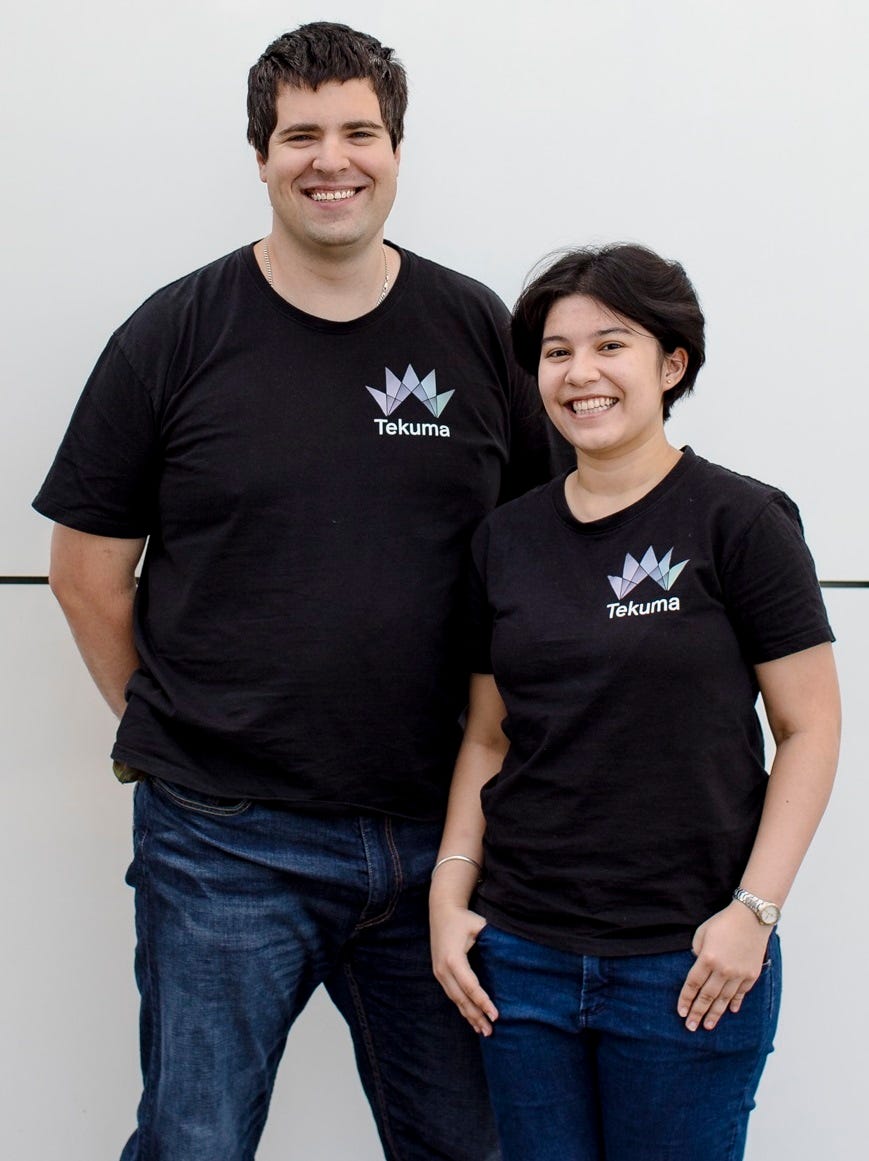
Picture: Takuma’s founders Annette McClelland and Michael Griffin.
Tekuma’s technology was originally invented to make it easier to control a drone and the camera attached to it, at the same time, with one operator. This is usually done with multiple operators or doing a sort of Pilates with your hands to operate two joysticks, dials, buttons, and other interfaces.
Start-up: Tekuma Tech
Business Description: Intuitive six-degrees of freedom control for robots & other devices. Reduce the time, cost, personnel and training required to get jobs done.
Year founded: 2015
Founders: Annette McClelland and Michael Griffin
Stage: Growth
Total fundraising: Bootstrapped
Incubators and accelerators: University of Technology Sydney Hatchery+, Hacker Exchange San Francisco, Hong Kong Hardware Heroes, CSIRO Connect@Lindfield, FD Global Connections Female Founders NYC, University of South Australia Venture Catalyst Program, Austrade & CSIRO's Civilian Defence San Francisco Landing Pad, UTS Summer Sprint Program, University of Adelaide Thinclab.
Location: Adelaide
What the Tekuma orb allows you to do is to replace up to 3 joysticks with the orb, allowing you to control six-degrees of freedom, entirely with just 2-3 fingers. Tekuma’s technology reduces the time, cost, personnel, and most of all, training required, to get jobs done.

Tekuma’s first paying customers were high school robotics teams, operating robots with multi-directional wheels. The students and their teachers explained that it would usually take an entire term for a student to feel confident operating these robots with a traditional two-joystick interface but with the orb they felt confident to compete with their robots in just a single afternoon.
UnderseaROV are Tekuma’s primary repeat customers. They have integrated the orb into their ROVorb control system for underwater rovers. They have been using it for over a year now to conduct maritime maintenance, exploration, and research. Their ocean rovers allow jobs to be done which might be dangerous or expensive for traditional diving methods and the Tekuma orb means any diver or sailor can quickly learn to operate and deploy an ocean rover when appropriate.
Tekuma has also tested the technology with people with neurological disabilities, such as multiple sclerosis. This testing found that users can operate the Tekuma orb very easily with only a few fingers, controlling all six-degrees of freedom, in only a few minutes of practise. Tekuma’s technology can give them access to controlling devices they otherwise would not be able to interact with and thereby access associated remote operating jobs.
Finally, the orb was also integrated into controlling peripherals such as robotic arms, sensor systems, cameras, and gimbals. Tekuma’s founders Annette and Michael believe that it would be effective in forklifts, cranes, bomb defusal, robotic surgery, and other applications where two or more joysticks are currently employed.
Next steps
Over the last five years, Annette and Michael bootstrapped Tekuma from problem to prototype to patents and to paying customers. They plan to take on new partners in new industries and see the Tekuma orb assisting users in new applications. The company is currently seeking partners who want give their users a friendlier control experience.



